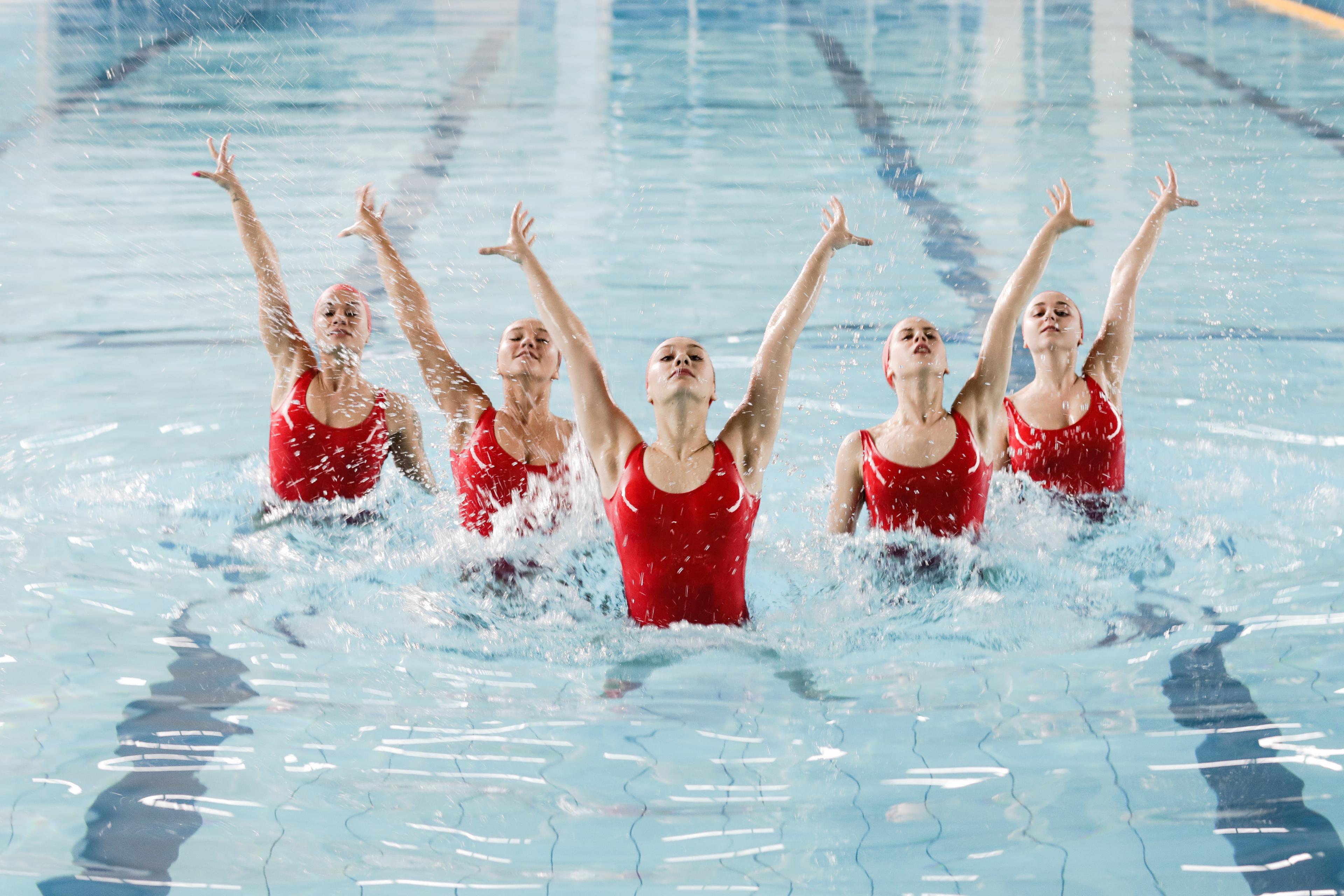- Home
- »Articles
- »Sport
- »Artistic swimming
- »What Is Artistic Swimming And How to Get Involved?



What Is Artistic Swimming And How to Get Involved?
27 September 2023
Artistic swimming, sometimes called synchronised swimming, is a beautiful and graceful sport that combines the elements of swimming, gymnastics, and dance. If your child enjoys swimming and is looking for a new challenge, they might be considering having a go. Here's everything you need to know to get started.
What is artistic swimming?
Artistic swimming is a sport that combines elements of swimming, gymnastics, and dance. Groups of swimmers perform choreographed routines set to music, often involving lifts and throws. Since they can’t touch the bottom of the pool during these moves, they have to have the strength to lift themselves out of the water. You may have heard it called synchronised swimming - this name comes from the way teams work together harmoniously, creating the illusion of one fluid movement. This takes great practice and precision, which is why it’s considered a highly technical sport.
How does it differ from traditional swimming?
Swimming is normally focused on speed and endurance, being the first to complete a set number of lengths of the pool. On the other hand, artistic swimming is more like dance or figure skating, where carefully choreographed routines are performed to music by a group of swimmers. Competitions tend to include both technical routines, where teams have to perform set moves, and freestyle, where they can be more creative. These routines may include acrobatic elements such as lifts and throws, and tend to require swimmers to be skilled at underwater swimming. It’s been described as a “sport art” as it combines the athleticism of swimming with the creative artistry of dance.
How can kids get involved in artistic swimming?
Many swimming clubs and local leisure centres run classes or training programmes for kids interested in artistic swimming, where they can learn the basics of the sport and begin to develop their skills. They may even be able to try it at their school if it’s offered there. If your child enjoys it, they can join the pathway programme offered by Swim England, which is designed to help them progress through the different levels of artistic swimming, from novice to elite.
The benefits of artistic swimming for kids
As well as the benefits of traditional swimming you’d expect, such as improved fitness, strength and lung capacity, artistic swimming teaches teamwork skills, discipline, confidence and creativity. The dance moves involved tend to make artistic swimmers more flexible and agile and give them an improved sense of rhythm. The complex routines take a lot of training to master and this regime teaches youngsters about the importance of perseverance, work ethic and collaboration with teammates.
Is it right for my child?
While some children will love artistic swimming, it's important to remember that it's not for everyone. The routines are often performed close to other swimmers and require split-second timing, so those who are uncomfortable being close to others or who struggle with coordination may find the sport challenging. It’s a structured sport with pre-choreographed routines, so those who prefer spontaneity rather than structure may not enjoy it. If your child shows an interest in artistic swimming, but you're not sure it's right for them, see if they can try a beginner class or two to see how they like it before making any long-term commitments.
Artistic swimming is a beautiful and graceful sport that combines the elements of swimming, gymnastics, and dance. If your child enjoys swimming, gymnastics, or dancing, they may enjoy artistic swimming.
